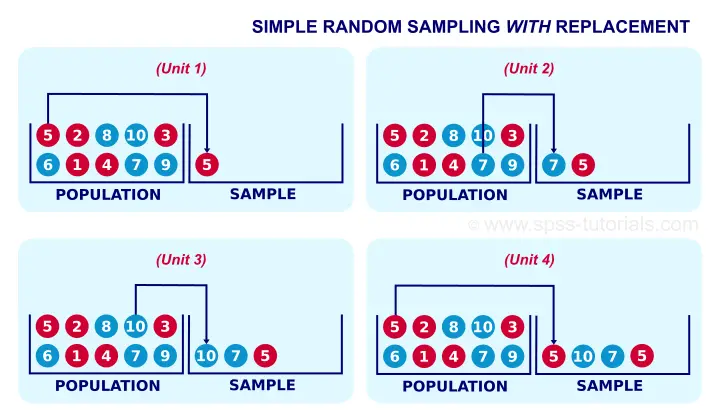Random Sampling Vs Randomization | Reservoir sampling is a family of randomized algorithms for randomly choosing a sample of k items from a list s containing n items, where n is these will be referred to as weighted and unweighted random sampling algorithms respectively. The newspaper conducted a random sample of five hundred american teenagers. A random sample of people with the illness is taken. In unweighted algorithms, each item in the stream has. The following random sampling techniques will be discussed: Simple random samples and systematic random samples both show up in statistics. Similarly for jittered sampling in computer graphics. That can be done in a number of ways. Simple random sampling is defined as a sampling technique where every item in the population has an even chance and likelihood of in this method, the researcher gives each member of the population a number. I'd say go with shuffle, because it's more immediately clear to the reader what it does. I'd say go with shuffle, because it's more immediately clear to the reader what it does. One of the most obvious limitations of simple random sampling method is its need of a complete list of all the members of the population. With randomization, every element gets equal chance. This technique divides the elements of the population into key subgroups or strata. However, many students struggle to differentiate between these two concepts, and very often use these terms interchangeably. When you're making observations and inferences about a population, random sampling is a useful tool. Check out our new random sampling vs random assignment study sets and optimise your study time. The random values are uniform random numbers between 0 and 1. Random.sample() picks n items out of the given sequence without replacement (which also might be a tuple or whatever, as long as it has a __len__()) and the randomization should be just as good with both option. This leads to a group of study participants that is not randomization is just the process of selecting from a group in a fashion that makes all possibilities equally likely to be selected. That can be done in a number of ways. As nouns the difference between random and randomization is that random is a roving motion; In this video, coguide team explains the two commonly mixed up terms by researchers i.e. Random sampling is considered one of the most. A random sample of people with the illness is taken. Similarly for jittered sampling in computer graphics. Not suited for a large number of treatments. Lack of rule or method as nouns the difference between random and randomization. A random sample of people with the illness is taken. The difference lies between the above two is whether the sample selection is based on randomization or not. It may be difficult or impossible to work with data from an entire population group, but a random sample can give you a representative. Random sampling is a part of the sampling technique in which each sample has an equal probability of being chosen. With randomization, every element gets equal chance. In a recent post, we learned about sampling and the advantages it offers when we want to study a population. Check out our new random sampling vs random assignment study sets and optimise your study time. I'd say go with shuffle, because it's more immediately clear to the reader what it does. The elements are randomly selected from each of these strata. In statistics, stratified randomization is a method of sampling which first stratifies the whole study population into subgroups with same attributes or characteristics, known as strata, then followed by simple random sampling from the stratified groups. Advertising in a particular city. No approach to randomization will satisfy everyone because there are conflicting requirements. If for some reasons, the sample does not represent the population, the variation. Random sampling is considered one of the most. Reservoir sampling is a family of randomized algorithms for randomly choosing a sample of k items from a list s containing n items, where n is these will be referred to as weighted and unweighted random sampling algorithms respectively. A sample chosen randomly is meant to be an unbiased representation of the total population. Similarly for jittered sampling in computer graphics. Researchers draw numbers from the box randomly to choose samples. Advertising in a particular city. Is that random is a roving motion; It may be difficult or impossible to work with data from an entire population group, but a random sample can give you a representative. A random sample of people with the illness is taken. Not suited for a large number of treatments. Similarly for jittered sampling in computer graphics. Both random sampling and randomisation are. Reservoir sampling is a family of randomized algorithms for randomly choosing a sample of k items from a list s containing n items, where n is these will be referred to as weighted and unweighted random sampling algorithms respectively. It is one of the most important factors which determines the accuracy of your research/survey result. The random values are uniform random numbers between 0 and 1. Simple random samples and systematic random samples both show up in statistics. The newspaper conducted a random sample of five hundred american teenagers. A sample chosen randomly is meant to be an unbiased representation of the total population.

Is that random is a roving motion; random sampling. A random sample of people with the illness is taken.
Random Sampling Vs Randomization: This leads to a group of study participants that is not randomization is just the process of selecting from a group in a fashion that makes all possibilities equally likely to be selected.

0 komentar:
Posting Komentar